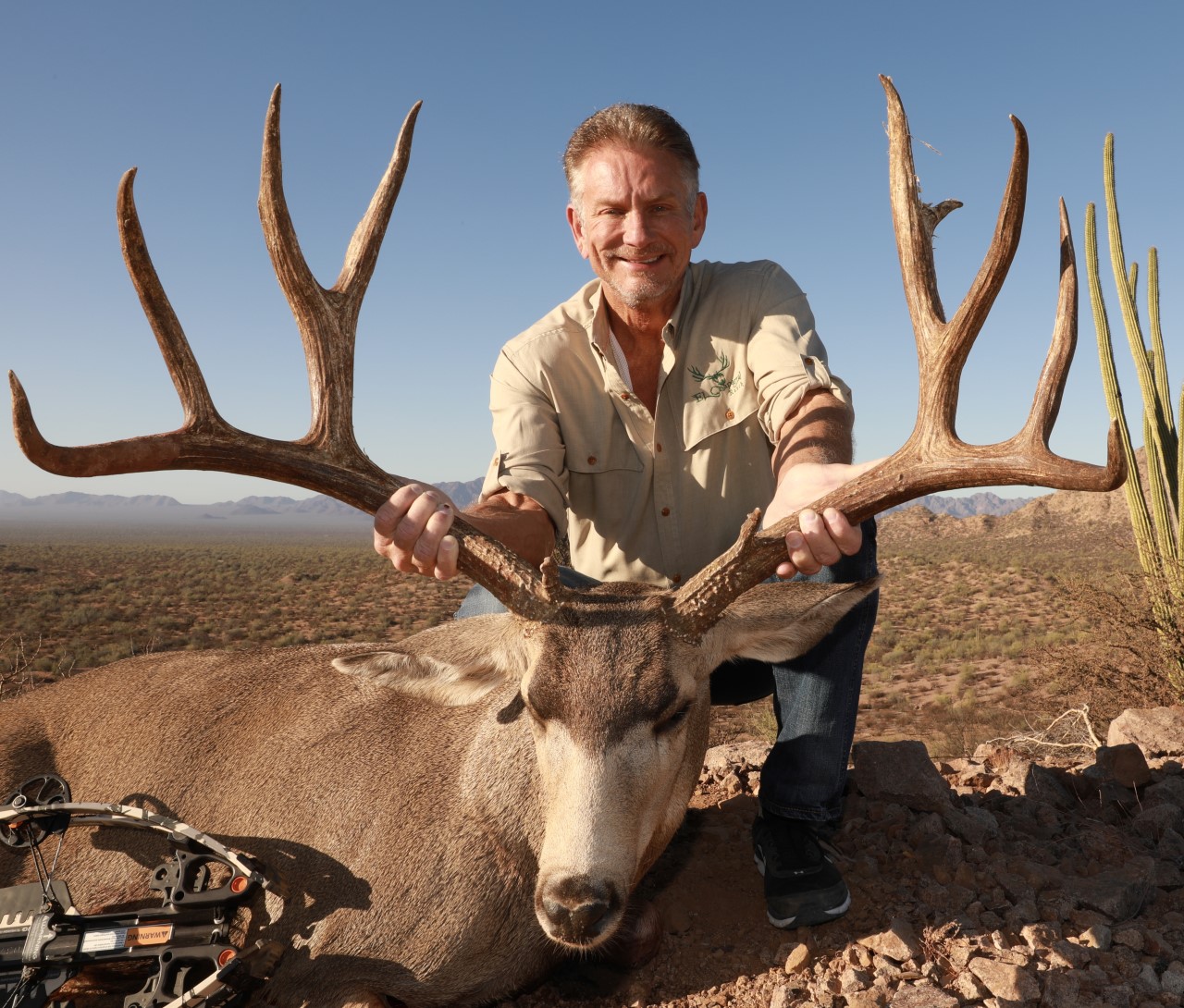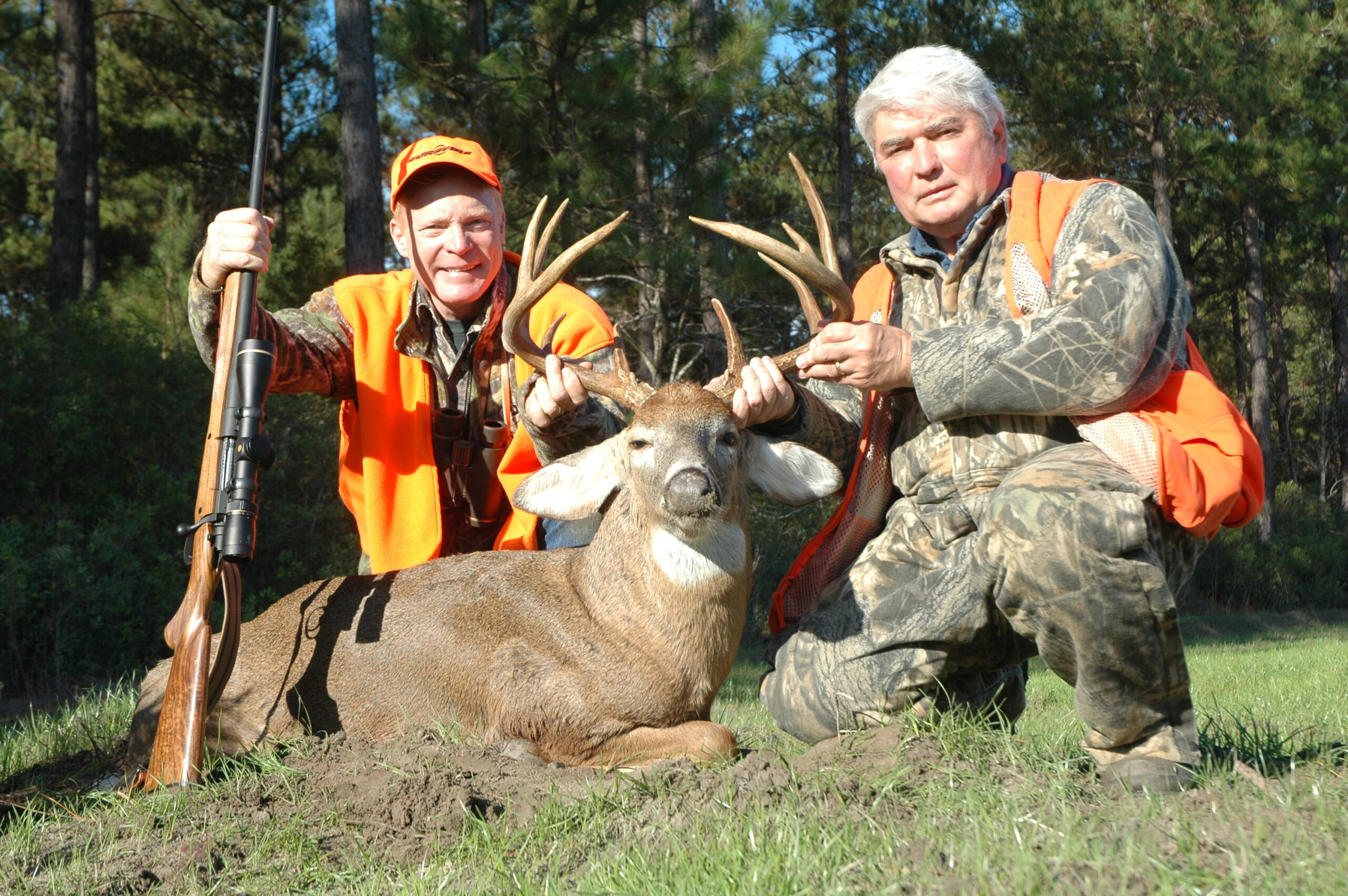I have a passion for hunting bears, especially brown bears. There is something about the bulk, stealth and mystique of a big brown bear that really excites me. They are mainly nocturnal and so quiet that at times they are flat-out eerie.
Several years ago, I experienced a fantastic hunt in Kamchatka, Russia. I successfully harvested a 10-foot bear. Since then, I have gone back to the Kamchatka Peninsula several more times with the same outfitters, Kamchatka Trophy Hunts and Ichanga Hunting Operations. I’ve had wonderful fishing trips and sheep hunts as well.

No place I have ever hunted rivals Kamchatka. This is a sportsman’s paradise, probably like Alaska was 50 or 60 years ago. There are more brown bears in Kamchatka than any place else in the world. The population is estimated at more than 27,000 bears. Hunting success is virtually 100%. You may also harvest a second bear.
Kamchatka is considered by many to be the last pristine wilderness area in the world. Just seeing it is an adventure in itself. The 1,250-kilometer-long peninsula is part of the Pacific Ring of Fire. There are 29 active volcanoes and 160 more that are now extinct but have left picturesque marks on the landscape. There are very few roads. A helicopter is necessary to access most of the wilderness. That dramatically limits the amount of human exposure.
This past spring, I went back to Kamchatka with friend Rick Macomber. It was his first time pursuing the large bruins in Russia. It was my fourth.
Representatives of Ichanga Hunting Operations met us at the airport in Petropavlovsk. They transported us about two hours from the airport to Snow Valley where we stayed the night. The next morning, we began a five-hour journey in a six-wheel-drive cargo transporter that carried us through deep snow and over the top of the mountain to our base camp 80 kilometers away. Dmitry Derevyagin, one of the owners of Ichanga, and his crew met us at camp. I have hunted with them before and consider them good friends.
The area we hunted was more than 200,000 acres of mountainous wilderness. It is immense and desolate. The only way to get around is by snowmobile.

Our hunt was earlier than my trip the previous year. The snow was now deeper and the air colder. At camp, the snow was so deep it was almost up to the cabin’s roof. We also experienced more cloudy weather and snow flurries, which made the tracks less prominent and more difficult to see.
When we hunted, we’d be pulled in sleds behind the snow mobiles. Guides would motor to high spots on a hill where we’d glass the area for fresh bear tracks. We’d then follow the tracks to locate the bear and plan the stalk.
Since Rick and I have both killed multiple brown bears, we told Dmitry that we were only looking for something special.
Our first day of hunting was windy and cold with clear skies. Even though we waited until 10 in the morning to start hunting, the snow was still icy and crunchy. The snow was so hard that the guides had to continually throw snow on the snowmobile engines to keep them from overheating.
We found one large bear track that was several hours old. A paw was bleeding apparently from walking on the icy snow. We followed the tracks for over an hour but eventually lost them on a steep, icy ridge where the wind had pushed snow over them.
The next day the weather was promising. We found several small bears, including some 8-footers. We followed one big track for several miles but eventually lost the tracks in some dense brush thickets.
One of the guys helping at camp wanted to go with us. He didn’t have a lot of snowmobile experience. When we were navigating some steep terrain, he ended up rolling his snowmobile. Fortunately, he was not hurt, but his snowmobile ended up with several “experience scars” as it rolled down the hill.
The following morning Dmitry and the other three guides took us to the ocean, approximately 40 kilometers away. The change proved to be interesting. We worked our way around dense thickets, steep canyons and across streams where we had to make bridges from tree limbs and brush.

This area had been hunted only a couple of times in the past. The chance of finding some real nice bears was very good. Some of the most beautiful sights I have ever seen were the ocean and the surrounding mountains with the backdrop of white snow, clouds and clear blue sky. The trip also provided an opportunity to do some river fishing for arctic char, which later proved to be excellent table fare.
On the way back to camp, one of the guides, Alexander, was in the lead breaking the trail. He was just about to cross a snow bridge when he realized that it was not sturdy enough to hold the weight of his snowmobile. He hit the brakes, but it was too late. As the snow bridge collapsed, we heard him utter an expletive. He slowly plummeted in an avalanche of powdery snow to the creek several feet below. The mishap pretty much happened in slow motion because Alexander was not going fast. But it was quite funny to watch. Fortunately, the only thing hurt was Alexander’s pride.
After helping dig the snowmobile out of the creek, the other guides toasted him with a shot of vodka (actually, three or four). Then they proceeded to tease him unmercifully. It is an old Russian tradition to have three shots of vodka after a successful hunt. It also seems to be a tradition to have three shots of vodka for any special occasion, which I think includes just about everything.
It snowed hard that night. The next day brought scattered snow flurries and fog. Each time it snowed we had to wait until it quit before we could glass the area.
We were only into the hunt a short while when we saw some big, fresh bear tracks. Rick won the coin toss and within seconds his .416 Remington Magnum was out of the case and ready for action.
The bear had either heard us or spotted us and headed for thick brush. Rick’s guide had an idea where the bear was going and got in a position for an ambush. There were many small canyons, so Rick and his guide played cat-and-mouse for quite some time before Rick finally had an open shot. The sound of Rick’s magnum echoed across the valley and the big bear tipped over when the 350-grain Barnes bullet found its mark. It was a clean kill. Rick had a beautiful 8-and-a-half-foot blond-phased trophy, and we still had several days left to hunt for 10-footers.

After we took pictures and skinned Rick’s bear, we headed out again. Within minutes we found more fresh tracks, but fortunately lost them. I say “fortunately” because a few minutes later we found even larger tracks made the day before.
Due to the weather conditions, it was extremely difficult to follow the old tracks, but it was a trophy bear worth the extra time and effort to try and locate. The fog and snow kept moving in and out of the valley. We had to stop several times and wait until we could see again. The big bear traveled all over the place and meandered in different directions in pursuit of food and a receptive female. Our guides spent all afternoon trying to unravel the tracks. Several times Anatoly, one of our guides who is also a professional trapper, got off his snowmobile and felt the indentation in the snow to see which direction the bear was going.
There were times I thought the guides were ready to give up when the tracks just disappeared. But they were relentless and eventually located where the bear had bedded down for the night under a dead tree. The fresher tracks were a lot easier to follow, and we started making better time. The big bruin kept skirting dense timber next to a river that was too deep for us to cross. Eventually he started heading uphill again where it was more open with lots of small hills and canyons. Rick was the first to see the bear as it climbed a ridge a few hundred yards above us. I watched the bear lumber up the hillside through my binoculars. It was quite the sight. His big hips swayed from side to side. He definitely was a trophy-size bear!
The bruin saw us and wasted no time putting distancing between us. We kept losing sight of him because of the fog, snow flurries, hills and canyons that were laced with birch trees and bushes. We followed him for a long time before we figured out where he was going.
Dmitry and the guides planned the stalk. They put me into a position where I could get a quartering-away shot when the bear crested the next hill. I centered the crosshairs of my Leupold scope behind the bear’s shoulder and gently squeezed the trigger.
My Kimber, chambered in .300 magnum with the 180-grain Barnes TTSX BT bullet, found its mark. The bear turned, and I put another shot in the vitals. The giant bruin was mine. It was another fantastic trophy from the land of the Ring of Fire.

What an exhilarating day for everyone with two trophy bears on the ground.
Even though I did not get a chance at another 10-foot bear, we had a fantastic hunt. Rick was able to take his second bear, a large 9-and-a-half-footer in the last hour on the last day of our hunt.–Gary Christensen




